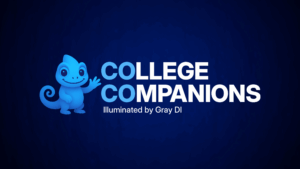We took a look at our data to find out which programs offer the most promise.
Following the 2008-9 recession, enrollment at public two-year colleges and for-profit institutions grew to 7.6 million, up from about 6.4 million in 2007. Over the following ten years or so, the growth ebbed a bit, but when Covid-19 brought another economic recession, it was expected that community college enrollment would pick up again, especially in Certificate programs–displaced workers would seek short-term training for new jobs. If you are reading this, you probably know that is not what happened.
Trends in Community College Enrollment
According to the National Student Clearinghouse, as of October 2020, enrollments at two-year public institutions declined 9.5% year-over-year from the fall of 2019. While Bachelor-degree program enrollments declined 1.1%, undergraduate Certificates and Associate-degree programs each declined at a significantly higher rate of 9%. In comparison, the largest previous year-over-year decrease was just 2.6%, in 2016.
How can community colleges reverse the enrollment downturn? The first step is to identify and focus on the most popular programs for Associate and Certificate programs.
We took a look at GrayData to see which Associate and Certificate programs have the most potential. We scored them on student demand, employment, competitive intensity and degree fit metrics, to identify the most promising programs. The news is good. In January 2021, eight of the top-ten programs in Google search volume are offered at two-year institutions. Criminal Justice topped the list; it rose 185%, reaching 143,500 searches a month in January.
Looking at State Markets
Drilling down into state data can also reveal unexpected opportunities for program growth. We explored the Ohio market during Gray’s February Demand Trends webinar.
Focusing on Associate’s programs with the highest market scores in Ohio, we identified Biology as a promising program; it scored 11th overall in student demand, employment, competitive intensity, and degree fit. Still focused on Ohio, we found that completions increased 22% and Google search volumes increased 23% year-over-year for Biology, this program also has strong international student demand. The employment opportunity associated with a Biology two-year degree is also robust, scoring in the 96th percentile compared to other Associate degrees in that market, although job openings have been uneven this past year.
The Unique Community College and Employment Skills Connection
Community colleges are in a strong position to customize their program offerings to meet local employment demand. In 2021, due to unforeseen industry fluctuations, there are changes in the skills employers seek. Using data on job posting lists of required skills and engaging with employers in curriculum development could help schools gain a real edge in attracting new enrollment.
The current job posting by skills chart reveals competencies that will give graduates an edge in the job market. This chart lists in-demand skills for Computer and Information Science at the Associate level.
Computer and Information Science, Associate level
Source: Gray DI Job Postings Dashboard, January, 2021
Finally, while COVID-19 may have ushered in a new era of uncertainty for community colleges, it also presents opportunities to grow new Associate and Certificate programs to help Americans get back to work and fuel positive enrollment trends.




